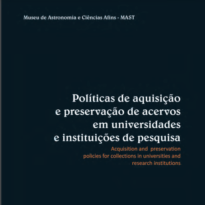-
A vida como pista: O papel da biografia no trabalho de organização de acervos pessoais de cientistas – os casos Hussak e Cruls
- Voltar
Metadados
Miniatura

Título
A vida como pista: O papel da biografia no trabalho de organização de acervos pessoais de cientistas – os casos Hussak e Cruls
Relacionado à Obra
Organizador(es)
OLIVEIRA, Lúcia Maria Velloso de | SILVA, Maria Celina Soares de Mello e
ISSN ou ISBN
978-85-6006-938-5
ISBN
978-85-6006-938-5
Sessão
TEMA 3 – Pesquisadores, arquivistas e conservadores: o diálogo em busca de políticas e diretrizes para a preservação do patrimônio científico
Páginas
275-291
Ano
Categoria
Local
Outro Idioma
Title/Título/Titre
Life as a clue: the role of biographies in the organization of scientists’ personal archives – The Hussak and Cruls cases
Abstract/Résumé/Resumen
The organization of personal archives uses the biographical information from the archive’s producer as one of its basic tools. Such information has important roles in the organization of the many different scientists’ personal archives under the care of the Astronomy and Related Sciences Museum (MAST – Museu de Astronomia e Ciências Afins), the work place of both authors. The main purpose of this paper is to demonstrate how either the presence or absence of such information interferes in the organization of the archives, roughly tracing some of the reasons why some of the biographies are characterized by the enormous amount of information and others, by obscurity. In our work we do a comparative analysis of two archives belonging to contemporary scientists, whose journeys are great examples of either the excess or lack of information: Eugen Hussak, Austrian geologist, who worked in Brazil between the end of the 19th century and beginning of the 20th; and Luiz Cruls, Belgian astronomer, whom worked as the director of the National Observatory and in different positions within public functions in this time frame. While Hussak’s archive is a great example of many of the difficulties of gathering the information that allowed the tracing of his life, the Cruls’ case had a different scenario, where we find an enormous amount of biographical data about him. Among the reasons for such discrepancy, we can name the difference in their professional activities. While Cruls had his carrier almost exclusively linked to State institutions, Hussak, although he acted in many activities linked to governmental spheres, had a professional life marked by weak links with institutions and companies, both public and private. The presentation of the cases also allows us to compare the different solutions that are available through the organization of those archives, specially the differences caused by the distinct visibility of the producers’ biographies.




